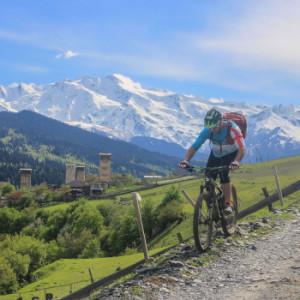
"Discover dramatic mountain landscapes and fascinating minority cultures on this 8 day cycling adventure in north western Yunnan"
Click image to start slideshow
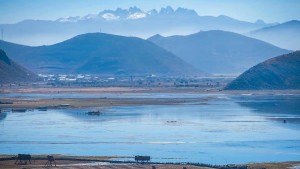






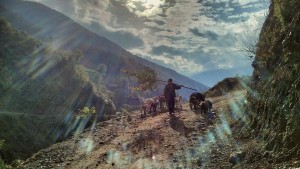



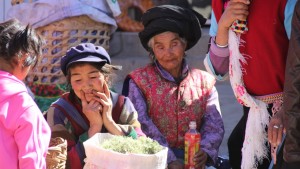




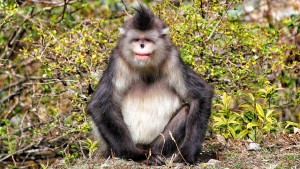


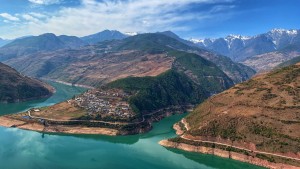









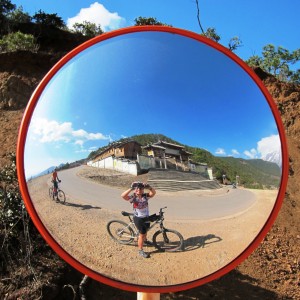




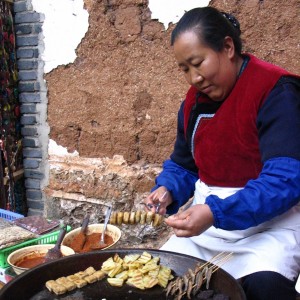
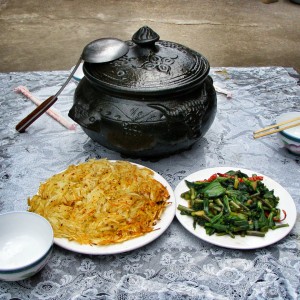






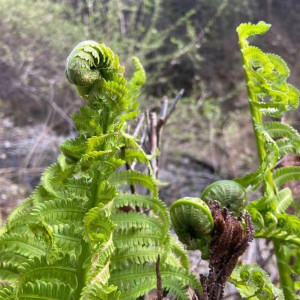




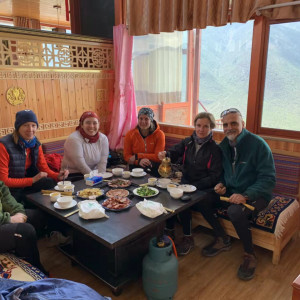





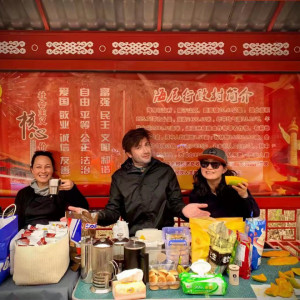













-
Day 1: Arrival Shangrila
DinnerOur meeting point is in Shangrila. You’ll be met at the airport for a short drive to our start point hotel in Shangrila old town. There will be a group meeting at 6pm where we’ll go over all the formalities of the trip and answer any questions you might have about the upcoming trip before heading out for a delicious Tibetan banquet in the old town. For those arriving early, not a bad idea if you wish to acclimatise and do some exploring, there is the old town to wander, Songzanlin Monastery to visit, and endless hikes in the surrounding hills, lakes and national parks. There are also numerous cafes, restaurants and local wares to sample as well as Shangrila’s own craft brewery that uses locally grown ingredients.
A town of many names, Shangrila, Xianggelila in Chinese, formerly called Zhongdian, sits at 3280m above sea level and is traditionally a Tibetan town (known as Gyalthang in Tibetan) and is most famous for Songzanlin Monastery, south west China’s most important monastery. Renamed Shangrila in 2003 to promote tourism, numbers of visitors have risen dramatically and much of the town has modernised, following a path that most Chinese tourism towns take: emptying the old areas of residents and making them commercial. The old town was almost destroyed in 2014, but has been restored now and, despite the development, it’s still one of the more charming old towns in China, particularly the architecture of the Tibetan homes; enormous ornately decorated buildings utilising the plentiful local wood; dwellings not found on such a grand scale in other parts of the Tibetan world.
The surrounding landscapes are probably the real drawcard though, for which Shangrila makes the perfect base: cool, crisp mountain air, deep blue skies, lush grasslands, pine forests, hot springs, wheat and barley fields, handsome villages, numerous lakes and flowering rhododendrons and azaleas in spring. With an extra day, jump on a bike or scooter and check out the spectacular views of Songzanlin from afar (no need to go in, unless this is your first monastery! There are several smaller temples in the surrounds that are have few tourists) or head for the hills on foot!
Shangrila Altitude: 3280m
-
Day 2: Cycle to Wujing Village
Breakfast, Lunch & Dinner 100 kmAfter breakfast and a bike set up, we begin our adventure with an epic 100km ride. Although it sounds like a long day, apart from a reasonably gentle six-kilometre climb, it’s all flat and downhill! We cycle out of town and head straight for Napa Hai on the outskirts of town, a large spectacular water catchment that is visited by several species of migratory birds, including the black necked crane. It’s also a grazing area for livestock and a water source for agriculture that produces wheat, barley and vegetables and surrounded by several Tibetan villages: seen reflected on the lake surrounded by mountains makes for some fine views! We leave the lake behind and start our mornings climb; prayer flags greet us at the pass at 3560m and the highest point of the trip, and then it’s all downhill from here. Our route takes us on a massive descent, over 1000m, to the mighty Yangtze below. Viewpoints will beckon you to stop along the way to take it all in - and there’s plenty of time to do so – as this will be the easiest 100km you’re ever likely to cycle. Tiny Tibetan and Lisu villages will dot the high hillsides as we descend to the river where the ride flattens out. A few small towns are passed by until we reach Wujing, a small Tibetan town where we lodge for the night.
After settling into the hotel, we’ll head out for dinner in town and, time permitting, visit the locally famous old 30m high Buddha tree, named Malishuwang, and check out the local ambiance. Whilst a relatively unknown place to outsiders, Wujing is close by Damofusi monastery high up in the mountains on the opposite side of the river. It’s a remote retreat where hard-core Tibetan Buddhist llamas head to delve into the deeper practices of their religion and, thus, is a pretty well-kept secret outside of in-the-know Buddhist circles.
Wujing Altitude: 1950m

-
Day 3: Cycle to Tacheng/ Visit Snubed-nosed Monkey Reserve
Breakfast, Lunch & Dinner 35 kmOur second day on the bikes, we ease into proceedings with a gentler 35km ride that continues along the Yangtze River before crossing a bridge over the river and following a smaller tributary, the Lapo River, that takes us along a beautiful fertile valley. Quaint farming villages, groves of gingko, rice and wheat fields, and densely forested hillsides are the views from the road. Our destination is the Xiangguqing valley, just beyond the township of Tacheng, where the golden monkey (also snub-nosed monkey) reserve is located.
This particular valley is home to roughly 360 individuals, and is part of the larger Three Parallel Rivers National Park, designed not only to protect the monkeys and other species that inhabit it, but also from habitat loss and the preservation of the important water catchment that the biodiversity in the valley depends on to survive. After lunch, there will be time to explore the area and see if you can catch a glimpse of these highland primates or other wildlife. We’ll settle in for the night with dinner near the park and surrounded by nature.
Tacheng Altitude: 2070m

-
Day 4: Cycle to Weixi Lisu Autonomous County
Breakfast, Lunch & Dinner 75 kmToday’s ride is the most challenging of the tour. With a steady climb for 46km we make our way up the valley, passing by several Lisu minority villages and their farmlands. The higher we go, the fewer villages we see, as the valley narrows and the forest becomes denser. Finally, we find ourselves on a plateau of undulating highland with lush grassland. After stopping for lunch, we have a 20km descent ahead of us before a shorter climb into Weixi town and our hotel for the night. Weixi Lisu Autonomous county is the main centre for the Lisu ethnic group, and we’ll head into town to try out some of the local food and experience the relative bustle of this rural centre.
Weixi Altitude: 2250m

-
Day 5: Cycle to Zhongpai Village
Breakfast, Lunch & Dinner 50 kmWe continue our journey with a quick transfer, bypassing a busy section of road. Back on the bikes, we greet the Mekong River at a point where three of Asia’s largest rivers - the Yangtze, Mekong and Salween - are less than 150km from each other. Between them are immensely steep, snow-capped mountains; barriers that cause them to diverge to different parts of Asia, sustaining huge modern-day populations along the way, once having given rise to the ancient empires and cultures that came before them, and eventually terminating in completely separate oceans, thousands of kilometres apart. We’ll spend the next two days cycling along the path that the Mekong etches through the mountains on its journey southward. There’s a section of tunnels that we’ll possibly skip before jumping back on the bikes and making our way to Zhongpai, a Lisu village, and our hotel with views over the Mekong River and Biluo Snow Mountain’s snowy summit that separates the Lancang and Nujiang Rivers. We are in Nu minority area now which means the food has changed, influenced more by South East Asian flavours, and the eating style is more tactile with people using their hands to eat. We’ll enjoy a banquet of this unique cuisine in the evening.
Zhongpai Altitude: 1770m

-
Day 6: Cycle to Lanping
Breakfast, Lunch & Dinner 56 kmBack on the bikes and we ride on undulating roads above the Mekong…the views are simply astounding as we make our way to lunch after 36km of biking. We’ll transfer the next section of tunnels and dusty roads and make our way to the top of today’s pass (don’t let the altitude profile scare you…we won’t be cycling up the big hill!!!). A beautiful forested twisting downhill ride will bring us to the outskirts of Lanping where we pack up the bikes for a ride into town. Lanping is the only autonomous county for both the Bai and Pumi people. It has been fairly recently recognised as one of China’s poorest areas and, as such, much development has gone into the place. The Bai people are originally from around the shores of Lake Erhai and Dali and moved into this area in the past along the old tea horse route. The Pumi are a Tibetan related people that were originally nomadic peoples, related to the Qiang, who occupied the highlands of the Tibet-Qinghai plateau. They were eventually forced into Sichuan and the Hengduan Mountains in Yunnan from the 13th century with the expansion of the Mongol empire. They became agriculturalists and maintained livestock in the highlands where they remain today. We’ll check out the local scene for our evening meal in this rarely visited town.
Lanping Altitude: 2420m

-
Day 7: Transfer and cycle to Lijiang
Breakfast, Lunch & Dinner 65 kmToday is our last day on the bikes. We transfer (2 hours) beyond a busy trafficked section of road to begin our ride at near Baihanchan Reservoir with an optional climb of 16km climb out of the Jianchuan valley (you can start riding at the top of this hill if preferred). At the top, it’s downhill to Lashi Lake with incredible views of Jade Dragon Snow Mountain and Haba Snow Mountain as the backdrop. From Lashi Lake, depending on time, we’ take a circuitous route of the plateau Lijiang sits on, with possible visits to Shuhe and Baisha Old Towns. Our destination hotel is on the edge of Lijiang Old Town. We’ll visit the old town tonight for a farewell feast and celebration of the end of our journey!
Lijiang is a massive tourist town and a summer escape for northerners these days so lots of tourists and lots of suburbs of holiday homes. The old town is the original old town for which the term “Lijiang-ified” was coined: that is, developed into a massive tourist trap and losing much of its authenticity. Having said all that, early mornings, late in the evenings or, if the light is right and you’re lucky, you’ll catch a glimpse of its former grandeur. It’s still UNESCO listed and is an impressive maze of old buildings and canals; it’s outlook under the ever-present Jade Dragon Snow mountain makes it one of the most picture-worthy towns in China. An extra half day would be enough to explore the old town. With more time, Shaxi is only a couple of hours drive away and is set in a rural valley with dozens of old villages to explore by foot or on two wheels It has an old town that has been well preserved and offers a much more intimate look at local life and the old tea horse route of the past.
Lijiang Altitude: 2420m

-
Day 8: Departure Day
Today is departure day and you are free to leave at anytime. We’ll organise a transfer to Lijiang airport for your departing flights.
Overview
Our newest Yunnan itinerary is an off-the-beaten-track ride through the plunging gorges, snow-capped mountains, lush valleys and vibrant towns along the upper reaches of the Yangtze and Mekong Rivers in the UNESCO listed Three Parallel Rivers National Park. The Tibetan, Lisu, Bai, Naxi and Pumi peoples that live in the region display an extraordinary diversity of languages and culture. A diversity that is mirrored in the wealth of flora and fauna that makes up a vast proportion of China’s plant and animal species, making it one of the richest temperate regions of the world in terms of biodiversity. The region has long been a favourite of ours too, simply for the sheer cycling joy of riding improbable mountain roads in the most jaw dropping scenery China has to offer!
This tour is designed to be accessible to those with a reasonable level of cycling fitness and an interest in exploring beyond the usual tourist offerings. The ride starts in the Tibetan town of Shangrila, at 3280m above sea level. Over six days of cycling, we make our way along the Jinsha River (Yangtze), visit the snub-nosed monkey (golden haired monkey) before heading up into the mountains separating the Yangtze with the Lancang River (Mekong), stopping in Weixi Lisu autonomous prefecture. We continue by descending down to the Mekong River, and along the gorge the river has carved into the mountains, before making our way back into the mountains to Lanping Bai and Pumi autonomous county. Our last day of riding brings us into Lijiang. There are some extended climbs, it’s a mountainous region after all, but there will be a support vehicle on hand if you need a ride up the hills. There is plenty of time allowed to comfortably complete the riding for the generally fit rider with stops along the way to take in anything that comes our way. There will also be some transfers here and there to avoid traffic or lengthy tunnels.
Getting There & Away
Shangrila Airport (DIG) is a small airport with flights mainly coming through Kunming (KMG) and also some via Chengdu (CTU). Kunming has connecting flights to most asian destinations as well as further afield internationally.
Lijiang Airport (LIG) is a bigger airport with many connections to destinations across China and a few international flights also.
If time permits, arriving a day earlier will allow you to acclimatise to the altitude as an added bonus to the extra time to explore once you arrive. There is also a high speed rail line connecting Kunming, Lijiang and Shangrila due to open in 2021. This would be a spectacular experience to add this train ride, or a section of it, to your trip.
Transfers
Airport/ train station pick ups and drop offs are included in the tour price. Please make sure you give us details of your arrival and departure, including flight details, date and time, so we can arrange your transfers.
Tour Info Pack
Once we have recieved your booking and deposit we'll send you a Tour INFO PACK that will include tour notes, training tips, preparation info and joining point instructions. If you have any questions about the tour at all please don't hesitate to contact us.
Further Info
For additional information regarding guides, accommodation and sleeping arrangements, cycling grades, food, bikes, etc you can head over to our About section to see more about how we run our tours.
Additional Accommodation
Arriving early or want to stay on after the tour ends? No problem! Just let us know if you'd like to book extra accommodation in the tour hotel at either the start or finish of the tour and we will arrange it for you. Just include your request on the booking form.
-
Can we change the itinerary or customise the tour?
Not for publicly listed dates, but if you have your own group or date in mind, Yes. If you want to make a private booking we can help design a tour that suits you. You may have ideas based on any of our tours or something in mind that you can't find on our website. Just get in contact with us and let us know what you have in mind and we'll try our best to make it happen!
-
Do you cater for vegetarians?
Yes we do! If you have any dietery requirements just let us know when you book in the space provided (Additional Requests). For any severe alergies or other conditions it is best that you let us know in advance so that we can prepare and/ or advise you on what we can provide or what you might need to bring so that are well catered for.
-
What about Covid 19?
Covid restrictions have passed for most countries and it is now possible to obtain tourist visas for China. For China you may need to provide a personal Covid test within taken 24 hours before your departure, these are only checked randomly, and can also be taken on arrival.
During all our tours we take care to avoid any transferring of any viruses, such as Covid, through providing hand sanitisers and minimising exposure. As with any illness, all care will be made for the participants well being during the tour and we will help with any arrangements that need to be made if the participant needs to leave the tour (this will be at the cost of the participant). Costs for unused segments of tours cannot be refunded, for any reason, as all tour costs are paid in advance.
-
How to I make a booking and payment?
Simply go to the "Dates" section of the tour page and click on the "book now" button, or click on "book" on the website header and select your preferred tour and departure date. If you are booking onto an on demand tour and have your own dates in mind there will be an facility for you book here too.
Before you book, we recommend that you read through the tour details and our booking terms and conditions. You can contact us about the trip if you have any questions at info@bikeasia.com or set up a time to chat about the tour.
Upon completion of your booking form we’ll send you an acknowledgement email and invoice for a deposit. All long trips (7 days or more) require a deposit of 300USD to guarantee your place. Trips departing within 60 days at booking will require full payment. Once your deposit is received, we’ll also send you a pre-trip information pack that will give you added information about the tour, the region you’ll be travelling through, a checklist of things to prepare, suggestions for packing, training tips and more. For shorter trips and day tours we require full payment 30 days prior to the commencement of the tour or as soon as convenient if booking within 30 days of departure.
Payments can be made on credit card via Paypal or through a direct bank transfer in most currencies. Information on payments will be present on your initial deposit invoice. Paypal payments will incur a 4% fee.
| Start Date | End Date | ||
|---|---|---|---|
| 19 Jun 2026 | 26 Jun 2026 | Book Now | |
| 04 Jul 2026 | 11 Jul 2026 | Book Now | |
| 15 Aug 2026 | 22 Aug 2026 | Book Now | |
| Choose your own date | Book Now | ||
Contact us for customised or private tours.
Tour Stats
- China
- 8 days
- Cycling Tour
- 3
- 381 km
- 6 - 20 People
- 1540 USD
- 280 USD (single supplement)
Highlights
- Hit the heights of Yunnan for some of the most jaw dropping cycling in China
- Meet local Tibetan, Lisu, Pumi, Bai, and Naxi minorities in their homelands
- Discover Shangrila and Lijiang old towns
- Marvel at the mighty Yangtze and Mekong rivers as they cut through the Hengduan Moutains
- Take a chance on seeing the rare snub-nose monkey
- Sample sumptuous local specialities and local produce
- Stay in a range of charming accommodations
- See verdant rural farming valleys and sunny blue skies
- Birdwatch at Napa Lake where migratory black necked cranes visit
- Be the first to cycle an un-touristed section of the Mekong in the Three Parallel Rivers National Park
- Take a boat ride on the Mekong River
- Ride carefree with a support vehicle, great bikes and attentive knowledgeable guides
What's Included?
- seven nights’ accommodation in comfortable guest houses and hotels
- all meals as listed
- airport transfers on arrival and departure days
- Bike Asia cycling leader and local cycling guide(s)
- support van(s) and driver/mechanic
- great quality mountain bikes
- drinking water, snacks and fruit on cycling days
- entry tickets as listed in the itinerary
What's Not Included?
- flights
- personal travel insurance
- alcoholic beverages
- personal expenses
- tips and gratuities.

